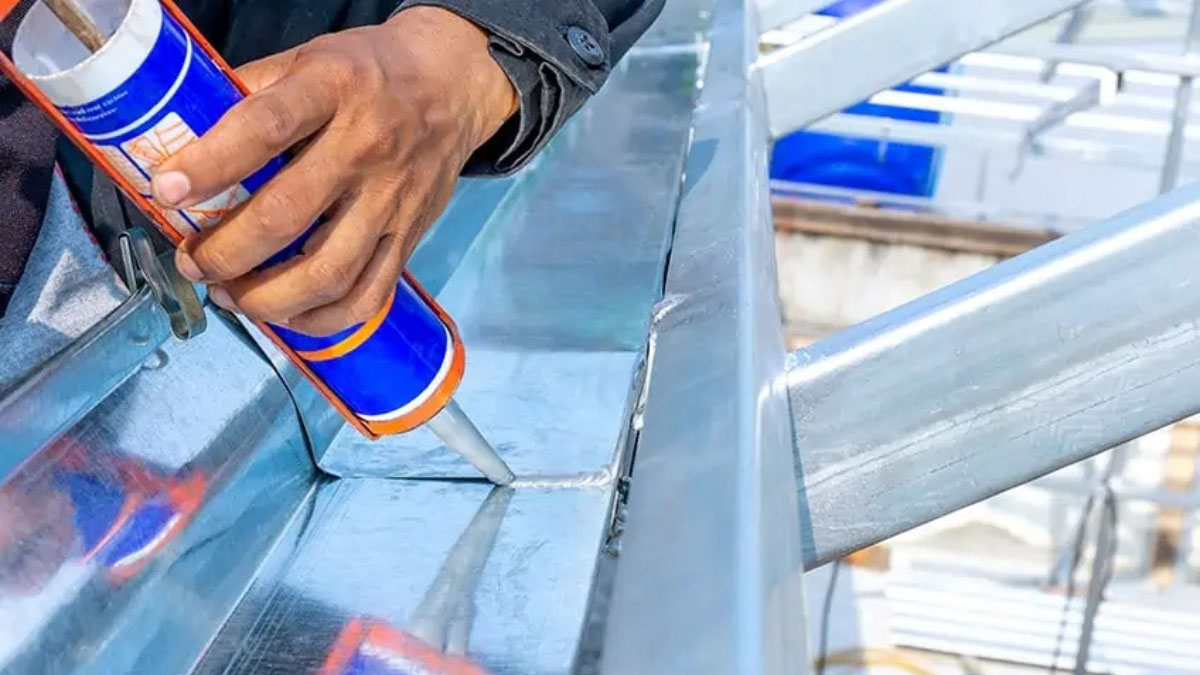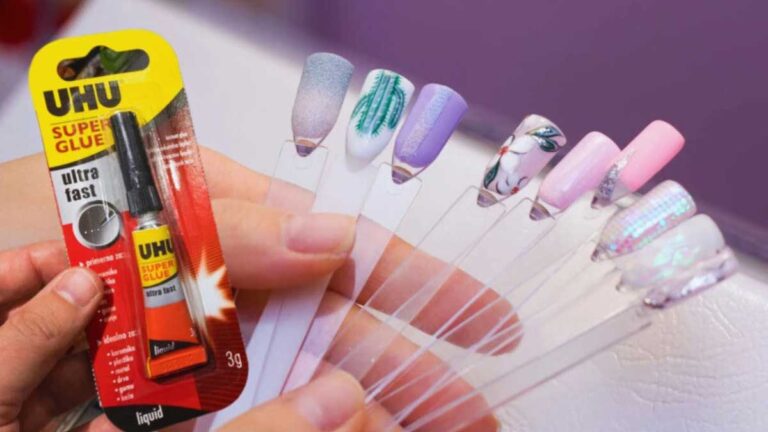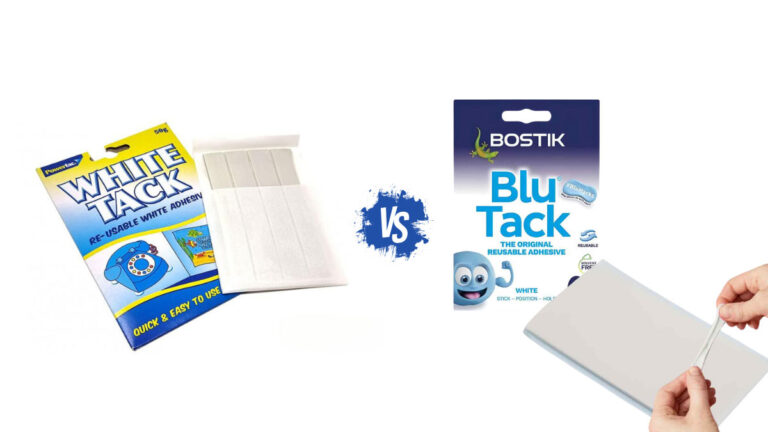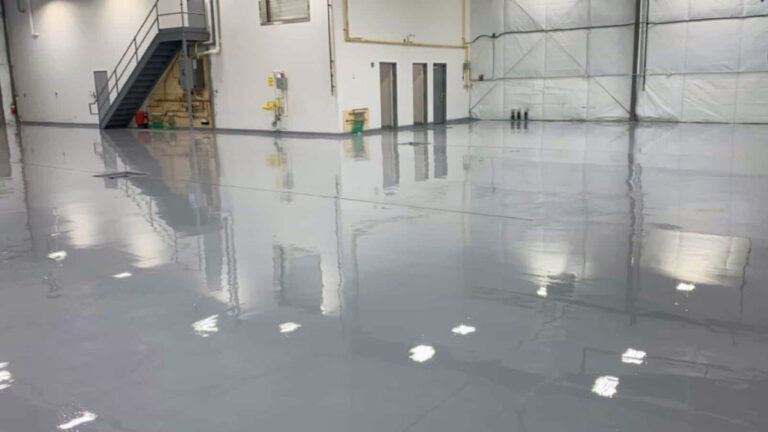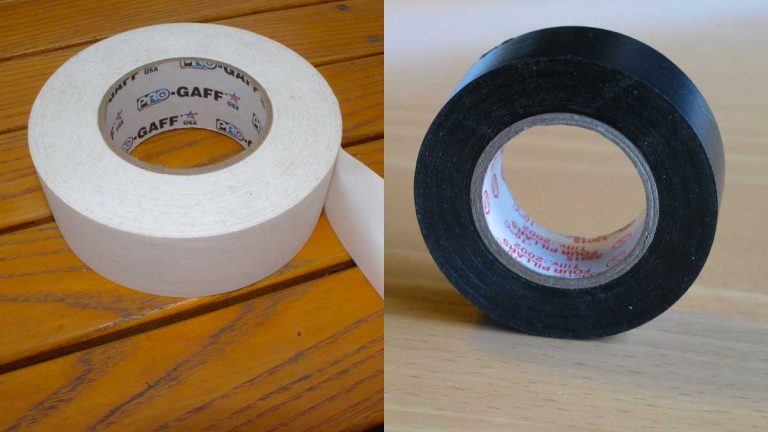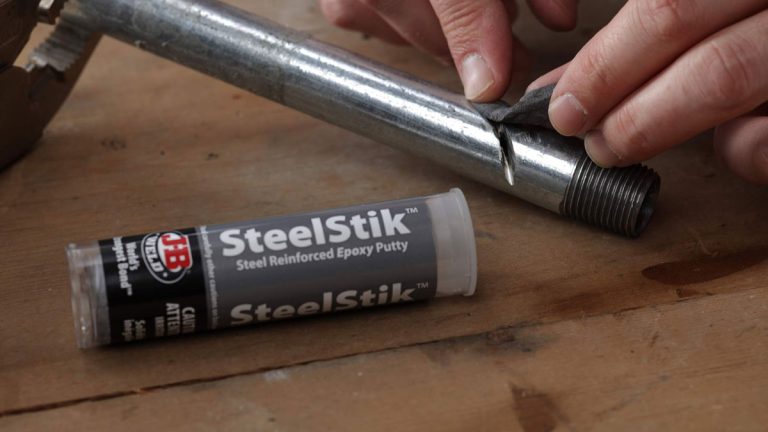Glue for Steel: How to Choose the Best Adhesive
When it comes to bonding steel, you might think welding or riveting are your only options. But, modern adhesives have revolutionized the way you can join metal surfaces, offering a cleaner, more efficient alternative. Whether you’re tackling a DIY project or handling industrial repairs, understanding the right glue for steel can save you time, money, and effort.
Adhesives designed specifically for metal surfaces provide strong, durable bonds that withstand various stresses and environmental conditions. In this text, you’ll discover the best types of glue for steel, their applications, and tips on how to achieve the strongest bond possible. Get ready to transform your approach to metalwork with the power of advanced adhesives.
Key Takeaways
- Alternative to Welding and Rivetry: Modern adhesives offer a clean and efficient alternative to traditional metal-joining methods like welding and riveting, suitable for both DIY projects and industrial repairs.
- Types of Adhesives: Common adhesives for steel include epoxies, structural acrylics, polyurethanes, and silicone-based adhesives, each offering unique properties such as strength, flexibility, and chemical resistance.
- Benefits of Using Adhesives: Adhesives provide simplicity, mess-free application, and strong, durable bonds that withstand environmental stresses such as heat, chemicals, and vibrations.
- Proper Surface Preparation: For optimal bonding, surfaces must be cleaned, sanded, and free of dust to ensure the adhesive adheres well.
- Application and Curing Techniques: Uniform application, correct positioning, and clamping are critical; curing times vary between adhesives, influencing bond strength and durability.
- Versatile Applications: Adhesives can bond steel to other materials such as plastics, wood, and glass, expanding their utility in various industrial and home improvement scenarios.
Understanding Adhesives for Steel
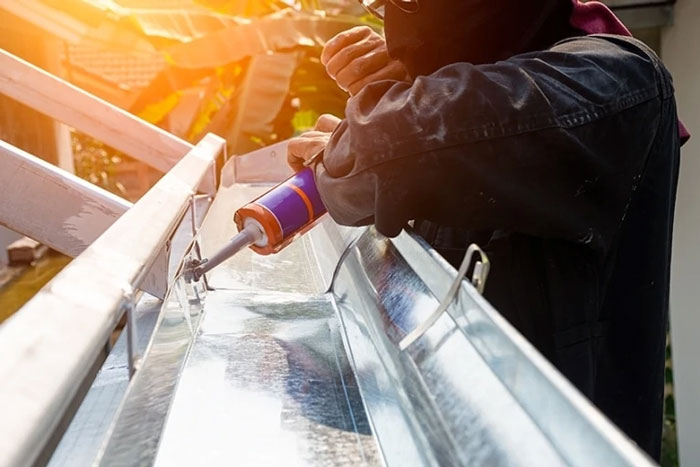
Why Use Glue for Steel?
Using glue for steel provides a range of benefits that make it a valuable alternative to traditional mechanical fastening methods. Gluing steel is convenient, strong, and versatile. Let’s investigate into these advantages in more detail.
Convenience and Ease of Use
- Simplicity: Gluing steel, especially for small or intricate projects, is simpler than welding or soldering. You don’t need specialized equipment or extensive training, making it accessible for hobbyists and professionals alike.
- Mess-Free: Adhesives eliminate the mess associated with welding and soldering. There’s no need for protective gear to avoid burns or damage, which streamlines the process.
Strength and Durability
- Modern Adhesives: Today’s metal adhesives, like epoxies and structural acrylics, offer formidable strength. They create bonds that endure environmental conditions such as heat, chemicals, and vibrations, ensuring your projects last.
- Durable Bonds: These adhesives are designed to resist wear and tear over time. The bonds they form are both strong and flexible, making them ideal for a variety of applications.
Versatility
- Material Compatibility: Metal adhesives can bond steel to various other materials, such as plastics, wood, glass, and other metals. This versatility is essential for varied applications in different industries.
- Wide Applications: Whether you’re working on a simple home repair or a complex engineering project, the adaptability of metal adhesives to different surfaces and conditions is invaluable.
Key Types of Metal Adhesives
Understanding the specific types of adhesives suited for steel can enhance your bonding projects. Here are some common ones:
- Epoxies: Known for their high shear strength and resistance to environmental factors.
- Structural Acrylics: Provide quick bonding and handle diverse materials.
- Polyurethanes: Flexible and impact-resistant, useful in dynamic environments.
- Silicone-based Adhesives: Offer excellent flexibility and thermal resistance.
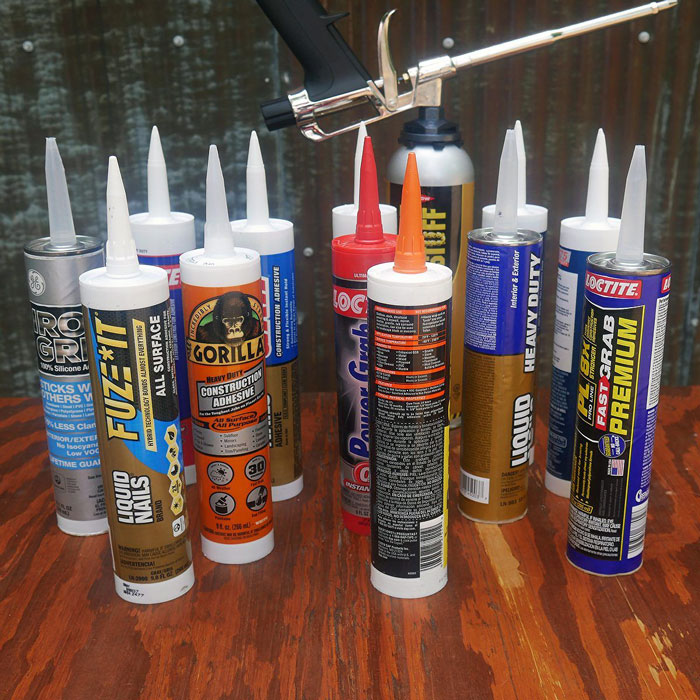
Comparison of Adhesive Properties
Here’s a detailed comparison of various metal adhesives highlighting their key properties:
| Adhesive Type | Key Properties | Best Used For |
|---|---|---|
| Epoxies | High shear strength, Chemical resistance | Structural bonding, Harsh environments |
| Structural Acrylics | Fast curing, Versatile material bonding | Quick repairs, Mixed material bonds |
| Polyurethanes | Flexibility, Impact resistance | Automotive, Construction, Dynamic loads |
| Silicone-based | Thermal resistance, Flexibility | Electronics, High-temperature applications |
Summary
Selecting the right adhesive for steel depends on your specific needs. For example, if your project involves high-stress environments, epoxies would be ideal. Structural acrylics work well if you need a quick-setting bond. Polyurethanes are best for impacts and flexibility, while silicone-based adhesives excel in thermal resistance applications.
Optimize your metal bonding projects by choosing the appropriate adhesive, ensuring enduring and robust results.
Types of Adhesives for Steel
When bonding steel, several adhesives offer unique benefits, ensuring strong and durable connections. Understanding the options helps you select the most appropriate adhesive for your project.
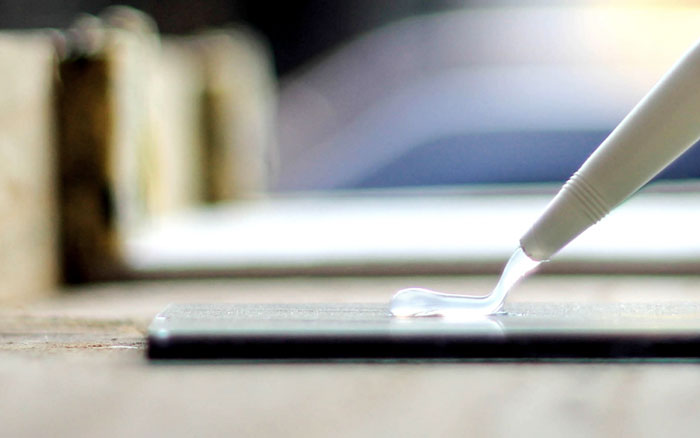
Epoxy Adhesives
Epoxy adhesives are renowned for their strength, heat resistance, and chemical resistance, making them a top choice for industrial applications.
- Characteristics: High strength, heat resistance, and chemical resistance
- Types:
- One-Part Epoxies: Heat-cured, no mixing required
- Two-Part Epoxies: Need mixing before application
- Applications: Automotive, machine building, repair, and rebuilding of metal components
- Example: Permabond ES569 – A single-part, heat-cured epoxy adhesive ideal for large gaps and vertical surfaces
Acrylic Adhesives
Acrylic adhesives provide high shear strength and fast curing times, making them suitable for quick assembly processes.
- Characteristics: Fast-curing, high shear strength, and good impact resistance
- Types:
- Two-Part Acrylics: Require mixing, provide a strong bond
- Surface-Applied Acrylics: Applied directly to surfaces without mixing
- Applications: Automotive components, electronics, and general metal bon†ding
- Example: 3M DP8407NS – A two-part acrylic adhesive offering high impact resistance and quick bonding
Polyurethane Adhesives
Polyurethane adhesives offer flexibility and durability, which are ideal for applications requiring a strong yet flexible bond.
- Characteristics: Flexible, durable, and resistant to impact and environmental conditions
- Types:
- One-Part Polyurethanes: Moisture-cured, ideal for flexible joints
- Two-Part Polyurethanes: Require mixing, provide a stronger bond
- Applications: Construction, automotive, and woodworking
- Example: Loctite PL Premium – A one-part polyurethane adhesive known for its strong bond and flexibility
Cyanoacrylate Adhesives
Known for their quick bonding properties, cyanoacrylate adhesives, or super glues, work well for small-scale applications.
- Characteristics: Quick-setting, high strength, and suitable for small areas
- Types:
- Ethyl Cyanoacrylates: General-purpose, strong bonds on various materials
- Methyl Cyanoacrylates: Higher resistance to heat and impact, suitable for metals
- Applications: Electronics, medical device assembly, and hobby projects
- Example: Gorilla Super Glue Gel – Offers high strength and quick-setting properties, suitable for precision applications
How to Choose the Right Adhesive
Choosing the right adhesive for steel requires understanding several key factors to ensure a strong, durable bond. An well-informed choice prevents failure and optimizes performance for your specific application needs.
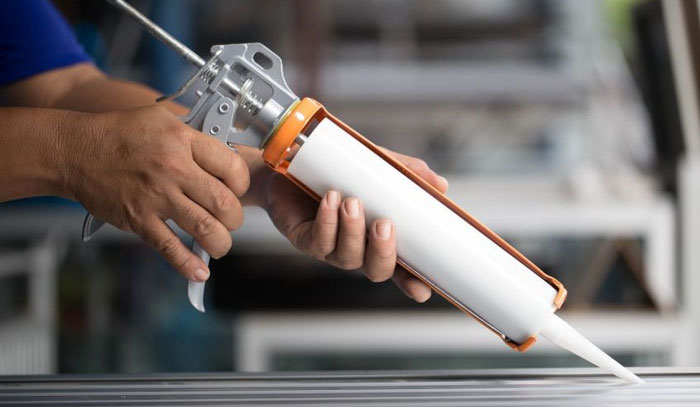
Factors to Consider
Type of Adhesive:
- Epoxy Adhesives: High-performance adhesives offering excellent strength, heat resistance, and chemical resistance. Suitable for bonding steel to steel or other materials like concrete. Available in flexible or rigid variants, with fast or slow setting times.
- Polyurethane Adhesives: Versatile adhesives ideal for various applications, including outdoor use. Water-resistant, UV-resistant, and can be sanded, stained, or painted after curing.
- Cyanoacrylate (Super Glue): Quick-bonding adhesives suitable for household fixes. Effective on metal and other materials like plastics and wood.
Environmental Conditions:
Consider the adhesive’s resistance to factors like temperature, humidity, and UV exposure. For outdoor applications, polyurethane adhesives are recommended due to their water and UV resistance.
Material Compatibility:
Ensure the adhesive works well with both steel and any secondary material. Epoxy adhesives are generally reliable for metal-to-metal or metal-to-concrete bonds.
Strength Requirements:
Determine the required tensile and shear strength for your application. For industrial use, epoxies provide extremely high strength, making them ideal for heavy-duty applications.
Curing Time:
Evaluate whether you need a fast-setting adhesive or can allow for longer curing times. Epoxies offer options between fast and slow curing, while cyanoacrylates provide almost instant bonding.
Comparing Adhesive Strength
Here’s a table comparing the strengths of different adhesives used for steel:
| Adhesive Type | Tensile Strength | Shear Strength | Heat Resistance | Setting Time |
|---|---|---|---|---|
| Epoxy Adhesives | Up to 3,500 psi | High | Up to 300°F | 5 min – 24 hrs |
| Polyurethane Adhesives | ~3,000 psi | Medium | Up to 200°F | 1 hr – 24 hrs |
| Cyanoacrylate (Super Glue) | ~2,000 psi | Low | Up to 180°F | Seconds to mins |
Summary
Selecting the appropriate adhesive is crucial for the performance and durability of steel bonds. Evaluate the type, environmental resistance, material compatibility, strength, and curing time to make an informed choice. Use the comparison table to match the adhesive’s properties with your specific needs. This ensures a strong, lasting bond tailored to your project’s requirements.
Application Techniques
To achieve a strong and durable bond when gluing steel, it is essential to employ the correct application techniques. Each step in the process plays a crucial role in the overall strength and longevity of the bond.
Surface Preparation
Proper surface preparation is critical for optimal bonding.
- Cleaning: Remove all oils, dirt, and rust from the steel surface. Use a solvent like acetone or isopropyl alcohol, and ensure that the surface is completely dry.
- Abrasion: Lightly sand the steel surface to create a rough texture. This helps the adhesive adhere better. Use sandpaper with grit size of 120-220.
- Dust Removal: After sanding, wipe away any dust particles with a clean, dry cloth. Even tiny particles can prevent a strong bond.
Bonding Process
Follow these steps to apply glue effectively to steel surfaces:
- Adhesive Application: Based on the adhesive type, mix the components if necessary. For example, with epoxy adhesives, combine the resin and hardener according to the manufacturer’s instructions.
- Uniform Spread: Apply a thin, even layer of adhesive on one of the surfaces. Avoid excessive glue as it can lead to weak joints and longer curing times.
- Positioning: Align and press the steel pieces together. Ensure there’s no movement during the bonding process as this can weaken the bond.
- Clamping: Use clamps or weights to hold the pieces securely in place. This maintains consistent pressure and contact between the surfaces.
Curing Time
Curing time ensures the adhesive achieves maximum strength.
- Epoxy Adhesives: These generally cure within 24 hours but may take up to 72 hours for full strength. Loctite Epoxy Metal/Concrete, for example, sets in 5 minutes but requires a full day to cure.
- Cyanoacrylate (Super Glue): Sets quickly, often within seconds. But, maximum strength is achieved after 24 hours.
- Polyurethane Adhesives: Typically require 24 hours to cure. Some brands may vary, so check specific product guidelines.
| Adhesive Type | Initial Set Time | Full Cure Time | Example Product |
|---|---|---|---|
| Epoxy Adhesives | 5 minutes | 24-72 hours | Loctite Epoxy Metal/Concrete |
| Cyanoacrylate (Super Glue) | Seconds | 24 hours | Loctite Super Glue Liquid |
| Polyurethane Adhesives | Depends on product | 24 hours | N/A |
By following these application techniques, you ensure a strong and durable bond for your steel projects. Proper surface preparation, precise bonding methods, and allowing sufficient curing time are key steps to achieve optimal results.
Common Applications
When selecting glue for steel, understanding the specific applications helps you make informed decisions. Whether you’re bonding steel to steel or combining it with other materials, knowing the appropriate adhesives and their strengths is crucial.
Steel to Steel Bonding
Steel-to-steel bonding requires adhesives that provide durable, strong connections. Here are the most effective adhesives for this purpose:
Epoxy Adhesives
- Versatility: Epoxy adhesives are known for their wide range of applications, including automotive and marine.
- Strength: These provide high tensile and shear strength, making them ideal for heavy-duty tasks. For example, Loctite Epoxy Metal/Concrete offers a durable bond.
- Weather Resistance: Ability to withstand extreme conditions, including heat and chemicals.
Preparation: Ensure surfaces are clean and sanded to optimize bonding.
Polyurethane Adhesives
- Flexibility: Polyurethane adhesives, such as Gorilla Glue, offer flexibility in bond lines.
- Water and UV Resistance: Suitable for outdoor applications due to resistance to moisture and sunlight.
- Durability: Provide long-lasting bonds that can endure environmental stresses.
Cyanoacrylate (Super Glue) Adhesives
- Fast-Setting: Cyanoacrylate adhesives set rapidly, making them efficient for quick repairs.
- Strong Bonds: Even though their small size applications, they provide robust and lasting holds.
Example: Used in electronic and medical devices where precision and quick bonding are vital.
Steel to Other Materials
Steel often needs to be bonded with materials like plastic, wood, or glass. Different adhesives cater to these combinations:
Multi-Material Epoxy Adhesives
- Versatile Use: Effective for bonding steel to plastic, wood, and glass.
- High Strength: Ensure robust connections for various material types.
- Chemical Resistance: Stand up to harsh environments, making them suitable for both indoor and outdoor use.
Example: When joining steel with wood in construction projects, epoxies provide a stable and lasting bond.
Structural Acrylic Adhesives
- Fast Curing: These adhesives cure quickly, speeding up assembly times.
- High Shear Strength: Suitable for applications requiring strong deformation resistance.
- Reduced Surface Preparation: Unlike other adhesives, less surface prepping is necessary.
Application: Ideal for automotive and aerospace industries where quick repairs and high strength are required.
Silicone Adhesives
- Flexibility: Silicone adhesives offer excellent elasticity, essential for materials that expand or contract.
- Temperature Resistance: Maintain adhesive strength in high and low-temperature situations.
- Waterproof: Ideal for sealing gaps and joints exposed to moisture.
Use: Common in home improvement for sealing windows and doors, where steel interacts with glass or other materials.
Summary
For steel-to-steel bonding, epoxy, polyurethane, and cyanoacrylate adhesives stand out due to their strength and durability. When bonding steel with other materials, versatile epoxies, structural acrylics, and flexible silicones offer reliable options. By choosing the right adhesive based on specific needs and material compatibility, you ensure lasting and robust bonds catered to various applications.
Troubleshooting and Tips
Addressing common challenges when using adhesives for steel can significantly improve your results. Each type of adhesive comes with its own set of potential issues. By understanding these and implementing practical tips, you can ensure a strong, reliable bond.
Common Issues and Solutions
- Cyanoacrylate (Super Glue):
- Issue: Poor adhesion on smooth surfaces.
- Solution: Roughen the surfaces with sandpaper to enhance grip. Use a crosshatch pattern when possible for better results. Clean the surfaces thoroughly to remove any grease or residue.
- Epoxy Adhesives:
- Issue: Long curing times can be inconvenient.
- Solution: Use a heat source to accelerate curing if the adhesive allows for it. Follow manufacturer guidelines to avoid compromising bond strength.
- Polyurethane Adhesives:
- Issue: Sensitivity to moisture.
- Solution: Ensure the surfaces are completely dry before applying the adhesive. Use a dehumidifier if necessary to reduce ambient moisture.
Preparation Tips
Proper surface preparation is crucial for effective bonding. Follow these steps to maximize adhesive performance:
- Cleaning: Remove all dirt, grease, and oxidation using a solvent or industrial cleaner.
- Sanding: Abrade the surfaces with medium-grit sandpaper to create a rough texture.
- Dust Removal: Wipe down with a clean, dry cloth to eliminate any residual dust.
Application Techniques
The way you apply the adhesive can impact the bond’s strength and durability. Here are some key tips to follow:
- Uniform Spread: Apply the adhesive evenly across the surface. Use a brush or applicator tool for consistent coverage.
- Proper Positioning: Align the surfaces accurately before pressing them together. Misalignment can weaken the bond.
- Clamping: Use clamps to hold the materials in place. Maintain pressure until the adhesive fully cures.
Curing Times
Understanding curing times for different adhesives ensures optimal bond strength:
| Adhesive Type | Typical Curing Time |
|---|---|
| Cyanoacrylate | Sets in seconds, full strength in 24 hours |
| Epoxy | Initial set in 30 minutes, full cure in 24 hours |
| Polyurethane | 24 hours to fully cure |
Storage and Shelf Life
- Storage Conditions: Keep adhesives in a cool, dry place. Extreme temperatures can affect their properties.
- Shelf Life: Check expiration dates. Using adhesives past their shelf life can result in weakened bonds.
Safety Precautions
- Ventilation: Work in a well-ventilated area to avoid inhaling fumes.
- Protective Gear: Wear gloves and safety glasses to protect your skin and eyes.
- Prepare surfaces properly by cleaning and roughening them.
- Apply adhesive uniformly and clamp until fully cured.
- Follow recommended curing times to ensure maximum strength.
- Store adhesives correctly and adhere to safety guidelines.
By implementing these troubleshooting tips and techniques, you can achieve strong and reliable bonds when working with steel adhesives.
Conclusion
Choosing the right adhesive for steel can revolutionize your metalworking projects. Modern adhesives offer a clean efficient alternative to traditional methods like welding and riveting. By understanding the properties and applications of various adhesives such as epoxies, structural acrylics, polyurethanes, and cyanoacrylates you can make informed decisions tailored to your specific needs.
Proper surface preparation and application techniques are essential for achieving strong and durable bonds. Follow the recommended steps for cleaning, abrasion, and adhesive application to ensure optimal results. With the right adhesive and technique, you can achieve lasting and robust bonds for any project, whether you’re a hobbyist or a professional.
Frequently Asked Questions
How long does it take for epoxy adhesive to cure on steel?
Epoxy adhesives generally take 24 hours to cure fully on steel surfaces.
What is the strongest adhesive for bonding metal?
Loctite Epoxy Weld Bonding Compound is one of the strongest adhesives for bonding most metals, including steel.
What adhesive is best for bonding steel to other materials?
Epoxy glue is ideal for bonding steel to other materials due to its strength and durability. Structural acrylics and flexible silicones are also suitable options.
Will cyanoacrylate adhesives work for metal?
Yes, cyanoacrylate adhesives, also known as super glues, work well for small-scale metal bonding and offer quick bonding properties.
How should surfaces be prepared before gluing steel?
Surfaces should be cleaned, abraded, and free of dust or grease to ensure a strong adhesive bond.
What is the cure time for polyurethane adhesives on steel?
Polyurethane adhesives typically require about 24 hours to cure fully on steel surfaces.
Can Gorilla Glue be used to bond steel?
Yes, Gorilla Glue, which is polyurethane-based, can bond steel effectively, along with other materials.
What are common applications for bonding steel with adhesives?
Common applications include industrial manufacturing, automotive repairs, and metal fabrication projects.
How do you ensure a uniform spread of adhesive on steel?
Apply adhesive evenly using a spatula or brush, position the parts correctly, and use clamps to maintain even pressure.
What safety precautions should be taken when using metal adhesives?
Use in a well-ventilated area, wear protective gloves and eyewear, and follow the manufacturer’s safety guidelines.

